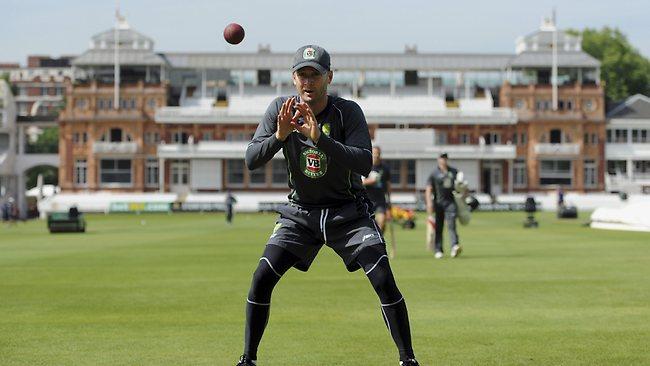Historic Ashes duels at Lord's make legends
AS the meeting of the oldest of rivals on the greatest of grounds, the Lord's Test match between England and Australia is unique.

AS the meeting of the oldest of rivals on the greatest of grounds, the Lord's Test match between England and Australia is unique. In the sporting world it has no rival as a time-honoured team contest, and few as a test of temperament.
For the Australians it is the command performance of their tour, and over the years they have risen better to the occasion.
The first of them at which I worked featured Don Bradman's side in 1948, the one that became known, not only in Australia, as The Invincibles.
They went through their tour of 34 matches unbeaten, mainly because they were, indeed, very good, but, partly too, because England were recovering more slowly from the effects of the Second World War.
If there seemed an inevitability about the result (England lost by 409 runs), just to be playing Australia again at Lord's, for the first time for 10 harrowing years, helped to make up for that, and England had found a champion in Alec Bedser, who dismissed Bradman twice in the match and for the fifth time in succession. He used to get him caught at backward short leg, a place in the field which, like the medium pace at which Bedser bowled, has gone quite out of fashion.
Keith Miller and Ray Lindwall were vitalising and glamorising the new age of Australian cricket. As the first pair of great fast bowlers Australia had produced since Jack Gregory and Ted McDonald a quarter of a century earlier, and infinitely dashing with it, they were held in awe by batsmen and spectators alike. I have a favourite visual image of Miller tossing a ball into the crowd as he walked off the field after bowling Australia to victory in the Lord's Test match of 1956, the very personification of the sporting cavalier.
But for those of my generation these wonderful games still have nothing to surpass the partnership between Trevor Bailey and Willie Watson in 1953, for the boost it gave England and the years it took off one's life.
Although England had won the last Test match on the 1950-51 tour to Australia, and by now had the players to beat anyone, they were still suffering from the last symptoms of an inferiority complex when they came up against Australia. Left with 343 to win at Lord's, having held their own for most of the match, they were soon 12 for three and then 72 for four, with another disappointment looming.
It was then that Bailey joined Watson, the famously dogged one and the natural games player with only two half-centuries in his previous nine Test innings. And together they stayed, from 12.42 on the last morning until 5.50 in the evening, resisting the combined might of Miller, Lindwall, Bill Johnston, Alan Davidson, Richie Benaud and a second leg spinner in Doug Ring, and so saving the match. Never did a draw feel more like a win and seven weeks later, at the Oval, the Ashes were regained for the first time for 19 years.
Australia's next two visits coincided with the Lord's "ridge", an assumed yet unidentifiable unevenness at the Nursery End of the pitch, somewhere near a good length, which seemed, certainly, to make batting an occasionally hazardous business. There were those who doubted its existence, but eventually MCC sent for the surveyors, who went to work with the ground staff, after which the faster bowlers no longer dominated things in the way they had in the Australia Tests of 1956 and 1961.
Of the 75 wickets to fall in those two matches, no fewer than 27 went to catches by the wicketkeepers standing back, and only nine, all told, to the spinners. With a conviction characteristic of him, Benaud played the innings of the 1956 match by choosing attack as the best method of defence and making an unflinching 97, 94 of them before lunch on the fourth day.
In 1961 Bill Lawry's 130 in Australia's first innings, far and away the biggest score of the match, was testimony to his renowned tenacity.
Finally, for producing one of the most remarkable, most unexpected and most neglected bowling feats seen at Lord's, the Test match of 1972. The bowler, whom you may have forgotten, was Bob Massie, playing in his first Test match. Two years earlier Northamptonshire had turned down Massie's application for a contract after he had taken three wickets for 166 runs in two matches for their second XI. Nothing he had done before or did again bore much resemblance to what happened now at Lord's, when he took 16 wickets for 137 runs in 60.1 overs with late and prodigious swing.
Only Jim Laker (19) at Old Trafford in 1956 and S. F. Barnes (17) on a matting pitch in Johannesburg in 1912 have taken more wickets in a Test match.
So how did Massie do it? Having Dennis Lillee to keep up the pressure as his bowling partner was obviously a factor; at times the atmosphere was heavy, which also helped, and his decision to bowl mostly round the wicket disconcerted England's batsmen, such prolific scorers as Geoff Boycott, John Edrich and Mike Smith among them. Had it been Headingley, in those days frequently a swing bowler's delight, it would have been less surprising, or even Lord's in September; but this was Lord's towards the end of June.
Being before today's requirement for the fielding side to throw the ball to the umpires, against the possibility of interference, at the fall of a wicket and other stoppages, there were hints that the ball could have been anointed with unholy oil or otherwise tampered with. But nothing came to light, nor could anything take away from Massie's unerring accuracy, unwavering stamina and ability to swing the ball both ways with no easily detectible change of action. It was, of its kind, a brilliant exhibition.
The series over, Massie played only two more Test matches back in Australia before losing his place to Max Walker. He was soon on his way to the commentary box, one of Test cricket's true meteors.


